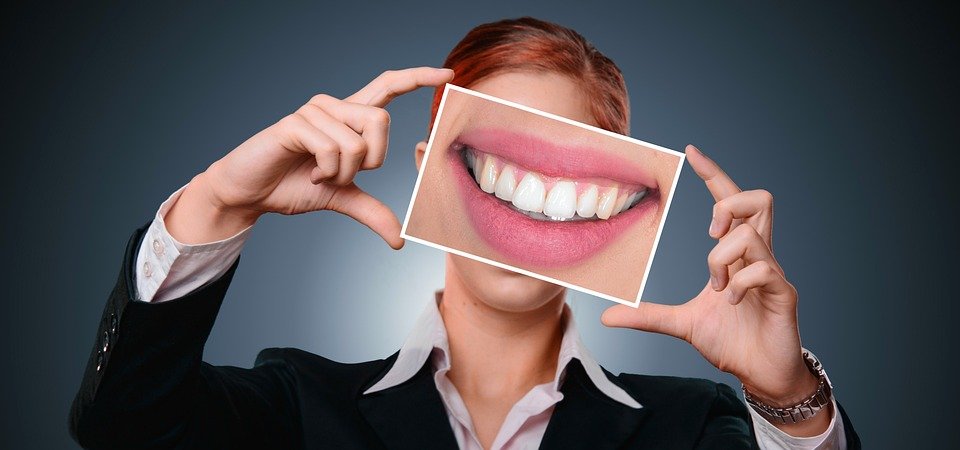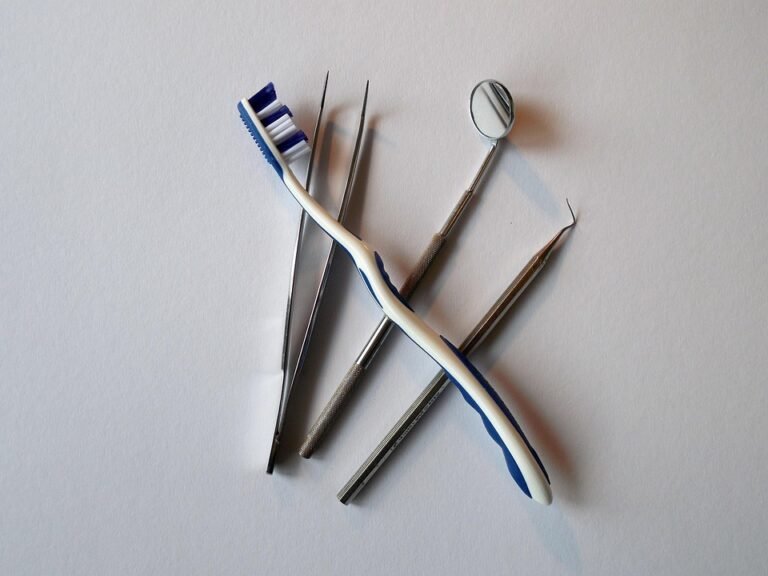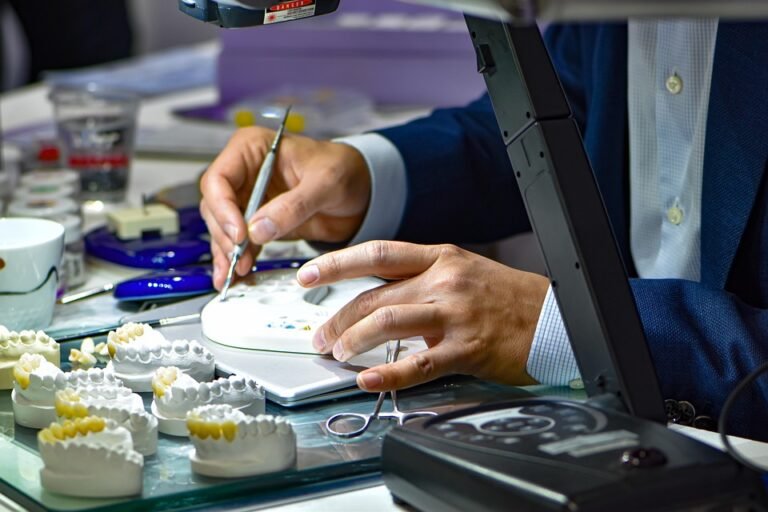What role does technology play in modern dental consultations
Okay, so I’m getting ready to go to the dentist, and it’s been a while. I’ve heard that things have changed a lot since my last check-up. My friend was just telling me about some crazy machine her dentist used to create a crown while she was there, and another mentioned a 3D scan instead of those goopy impressions.
I’m mainly curious about a few things. Like, how does all this new technology actually improve the experience for the patient? Is it just for the fancy procedures, or does it also help with routine checkups? I’m thinking specifically about:
- How does it affect accuracy in diagnosis? Are dentists able to see things now that they couldn’t before?
- Does it actually shorten the consultation time, or does it just add extra steps?
- What about patient comfort? Does the technology make things less painful or uncomfortable?
- Finally, how does it impact communication between the dentist and the patient? Are dentists better able to explain problems and treatment options using these technologies?
Basically, I want to know if all this "high-tech dentistry" is really worth it, or if it’s just a gimmick. I want to be informed before I go in for my appointment so I know what to expect and what questions to ask!
Answer
Technology plays a multifaceted and crucial role in modern dental consultations, transforming nearly every aspect of the process, from diagnosis and treatment planning to patient education and record-keeping. It enhances efficiency, accuracy, and patient experience, leading to better overall oral health outcomes. Here’s a detailed breakdown of its impact:
1. Enhanced Diagnostic Capabilities:
-
Digital Radiography (X-rays): Digital radiography has largely replaced traditional film-based X-rays. Its benefits include:
- Reduced Radiation Exposure: Patients are exposed to significantly less radiation compared to traditional X-rays.
- Instant Image Viewing: Images are available immediately on a computer screen, eliminating the need for film development.
- Image Enhancement: Software allows dentists to adjust brightness, contrast, and magnification to identify subtle details, such as early signs of decay or bone loss.
- Easy Storage and Retrieval: Digital images are stored electronically, making them easy to access, share, and back up, contributing to better patient record management.
- Types of Digital Radiography:
- Intraoral Radiography: Includes periapical (single tooth), bitewing (crowns of teeth), and occlusal (roof or floor of mouth) radiographs.
- Extraoral Radiography: Includes panoramic radiographs (entire mouth in one image) and cephalometric radiographs (skull X-rays for orthodontic assessment).
-
Cone-Beam Computed Tomography (CBCT): CBCT provides three-dimensional imaging of the teeth, jaws, and surrounding structures. Its advantages include:
- Detailed Visualization: Allows for a comprehensive assessment of bone density, nerve pathways, and tooth positioning.
- Precise Implant Planning: Essential for planning dental implant placement, ensuring accurate placement and avoiding vital structures.
- Diagnosis of Complex Conditions: Useful in diagnosing impacted teeth, cysts, tumors, temporomandibular joint (TMJ) disorders, and other complex conditions.
- Endodontic Applications: Aids in visualizing root canal anatomy and identifying fractures.
-
Intraoral Cameras: Small, handheld cameras that capture high-resolution images and videos of the inside of the mouth.
- Enhanced Visual Examination: Allows dentists to view areas that are difficult to see with the naked eye.
- Patient Education: Enables patients to see real-time images of their teeth and gums, facilitating understanding of their oral health conditions and treatment options.
- Documentation: Provides a detailed visual record of the patient’s oral health, which can be used for tracking progress and for insurance purposes.
-
Digital Scanners: Digital scanners create three-dimensional models of teeth and oral tissues without the need for traditional impressions.
- Improved Accuracy: Digital impressions are more accurate than traditional impressions, leading to better-fitting restorations and appliances.
- Patient Comfort: Eliminates the discomfort and gagging associated with traditional impression materials.
- Efficiency: The scanning process is quick and efficient, saving time for both the dentist and the patient.
- Applications: Used for creating crowns, bridges, veneers, Invisalign aligners, dentures, and other dental restorations.
- Optical Coherence Tomography (OCT): OCT uses light waves to create cross-sectional images of tissues, similar to ultrasound, but with higher resolution.
- Early Detection of Caries and Periodontal Disease: Can detect early signs of decay and gum disease that may not be visible with other diagnostic methods.
- Assessment of Soft Tissues: Useful for evaluating the health of the gums and other soft tissues in the mouth.
2. Streamlined Treatment Planning:
-
CAD/CAM (Computer-Aided Design/Computer-Aided Manufacturing): CAD/CAM technology allows dentists to design and fabricate dental restorations, such as crowns and veneers, in-office.
- Faster Turnaround Time: Restorations can be created in a single visit, eliminating the need for temporary crowns and multiple appointments.
- Precise Fit and Aesthetics: CAD/CAM systems ensure a precise fit and a natural-looking aesthetic result.
- Material Options: A wide range of materials can be used with CAD/CAM technology, including ceramic, porcelain, and composite resins.
-
3D Printing: 3D printing is used to create a variety of dental appliances, including surgical guides, models, and orthodontic aligners.
- Customization: 3D printing allows for highly customized appliances that are tailored to the individual patient’s needs.
- Efficiency: 3D printing can create appliances quickly and efficiently, reducing turnaround time.
- Cost-Effectiveness: In some cases, 3D printing can be a more cost-effective option than traditional manufacturing methods.
-
Digital Smile Design (DSD): DSD software allows dentists to create virtual models of a patient’s smile, enabling them to visualize the final outcome of cosmetic dental procedures.
- Enhanced Communication: Helps patients understand the potential benefits of cosmetic dentistry and make informed decisions about their treatment.
- Predictable Results: Allows dentists to plan and execute cosmetic procedures with greater precision, leading to more predictable results.
- Surgical Planning Software: Software programs that utilize CBCT scans to create detailed 3D models of the patient’s anatomy, allowing surgeons to plan complex procedures, such as implant placement and bone grafting, with greater accuracy and safety.
3. Enhanced Patient Education and Communication:
-
Visual Aids: Intraoral cameras, digital radiographs, and 3D models provide patients with visual representations of their oral health conditions, making it easier for them to understand their treatment needs.
-
Interactive Software: Interactive software programs can be used to explain dental procedures, demonstrate proper oral hygiene techniques, and answer patient questions.
- Teledentistry: Telecommunications technology is used to provide remote dental consultations, allowing patients to receive care from the comfort of their own homes.
- Increased Access to Care: Teledentistry can improve access to care for patients in remote areas or with limited mobility.
- Convenience: Teledentistry offers a convenient way for patients to receive consultations and follow-up care.
4. Improved Practice Management and Efficiency:
-
Electronic Health Records (EHRs): EHRs have replaced paper-based records, streamlining patient information management.
- Efficient Record-Keeping: EHRs provide a centralized and easily accessible repository for patient data.
- Improved Communication: Facilitates communication among dental professionals and with other healthcare providers.
- Reduced Errors: Minimizes the risk of errors associated with manual data entry.
- Automated Reminders: Automatically sends appointment reminders to patients, reducing no-shows.
-
Practice Management Software: Software programs that manage scheduling, billing, insurance claims, and other administrative tasks.
- Streamlined Operations: Automates many of the day-to-day tasks involved in running a dental practice.
- Improved Efficiency: Frees up staff time to focus on patient care.
- Data Analysis: Provides data insights that can be used to improve practice performance.
- Online Scheduling and Communication Portals: Allows patients to schedule appointments, request refills, and communicate with the dental office online.
- Convenience for Patients: Provides patients with a convenient way to manage their dental care.
- Reduced Phone Traffic: Reduces the number of phone calls to the dental office, freeing up staff time.
5. Precision and Minimally Invasive Techniques:
-
Dental Lasers: Lasers are used in a variety of dental procedures, including:
- Soft Tissue Surgery: For procedures such as gingivectomies (gum reshaping) and frenectomies (tongue-tie release).
- Cavity Detection: Some lasers can detect early signs of decay.
- Teeth Whitening: Lasers can be used to accelerate the teeth whitening process.
-
Air Abrasion: Air abrasion uses a stream of air and abrasive particles to remove decay from teeth.
- Minimally Invasive: A less invasive alternative to traditional drilling.
- Reduced Noise and Vibration: Quieter and less vibrating than traditional drills.
- Guided Biofilm Therapy (GBT): GBT uses specialized tools and techniques to remove biofilm (plaque) from teeth.
- Effective Plaque Removal: Provides a more effective and comfortable way to remove plaque than traditional methods.
- Patient Education: Emphasizes the importance of proper oral hygiene and empowers patients to take control of their oral health.
In summary, technology has revolutionized modern dental consultations, resulting in more accurate diagnoses, more predictable treatment outcomes, improved patient education, and more efficient practice management. By embracing these advancements, dental professionals can provide their patients with the highest quality of care and help them achieve optimal oral health.






